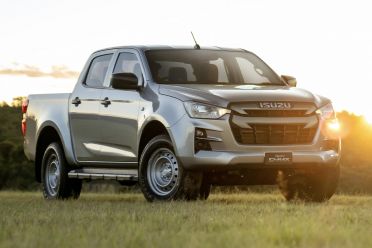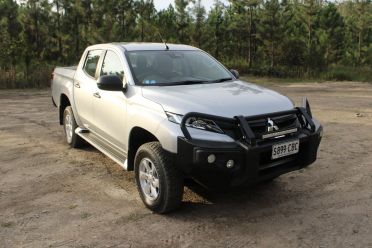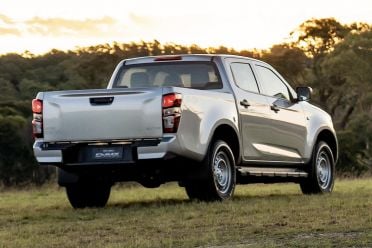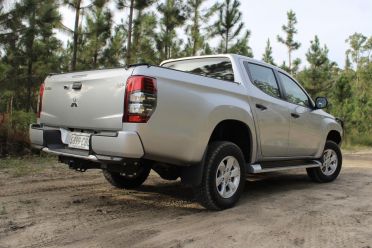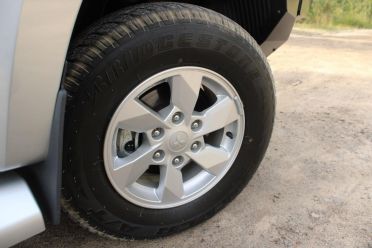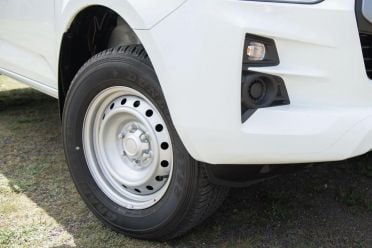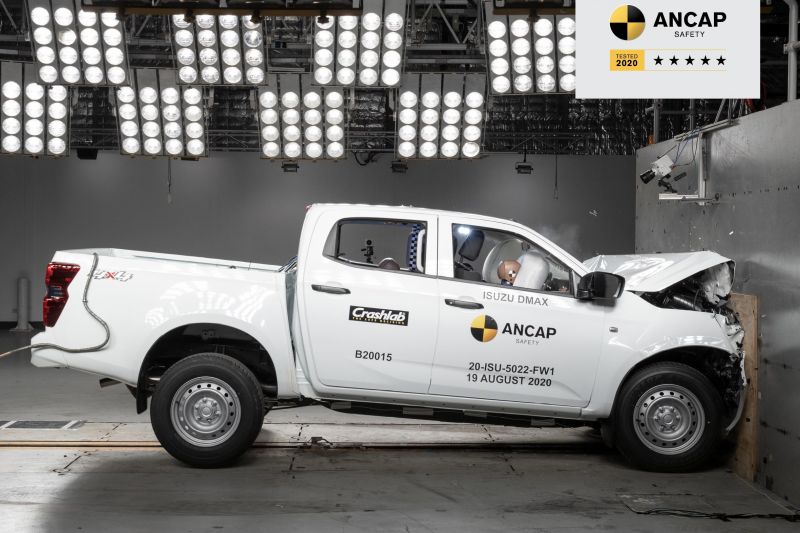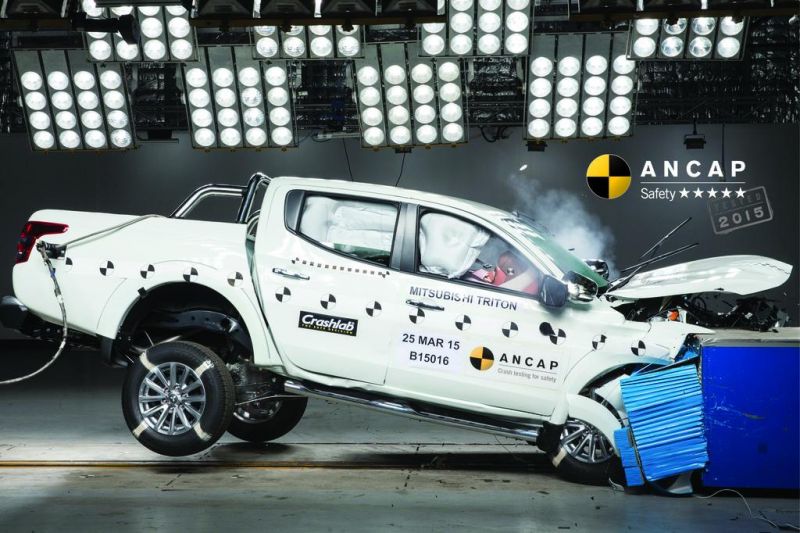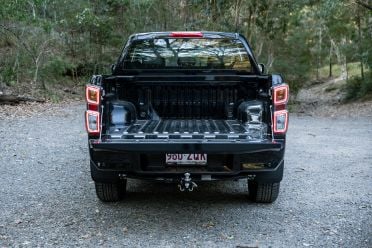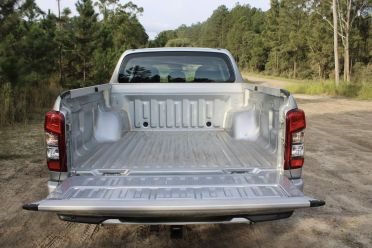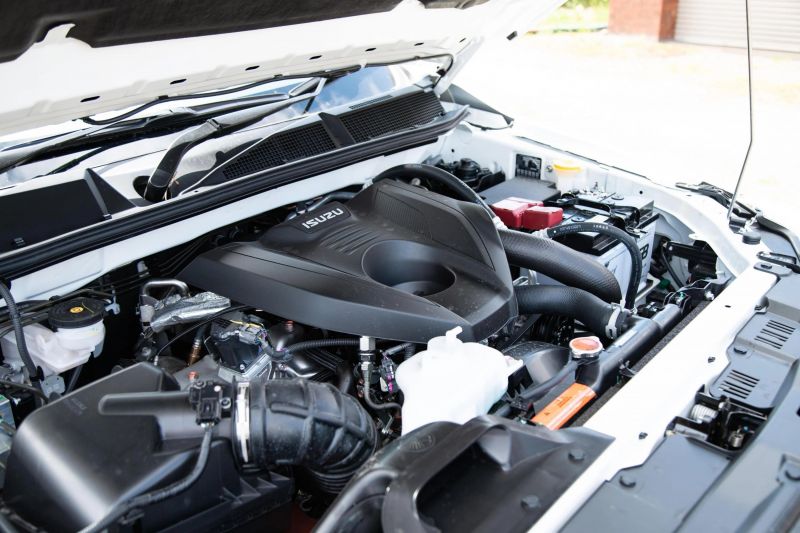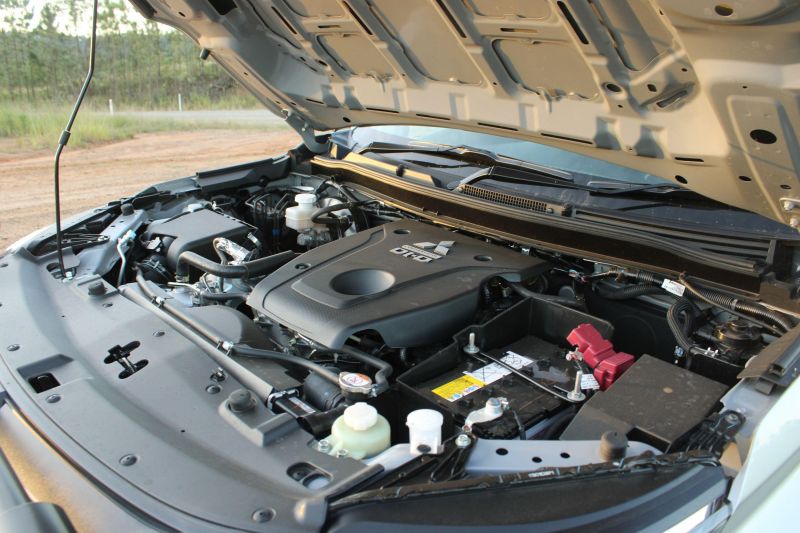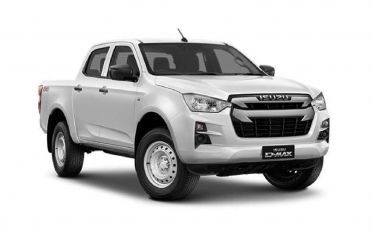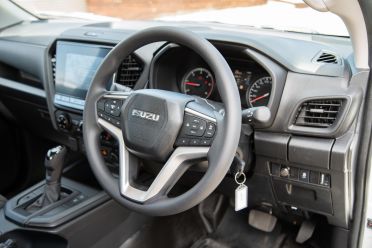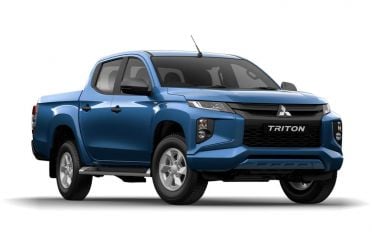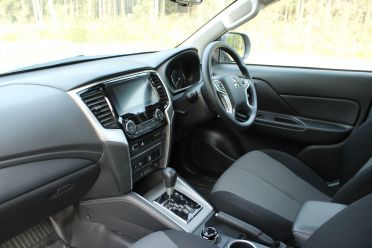Top-of-the-range utes generate most of the headlines, but it’s the workhorse derivatives that do much of the literal and proverbial heavy lifting.
We’ve been quite clear in stating the Isuzu D-Max X-Terrain is just about the best luxo ute you can get, but at the other end of the spectrum sits the base D-Max SX.
It’s not short of competitors, but here we’ve chosen to run its specs against a Mitsubishi Triton. Why? Because this no-frills machine has become a byword for sharp value.
While the fleet-friendly Triton GLX is the base variant, the GLX+ is a better contrast with the Isuzu because it’s more similarly equipped yet keeps its price advantage.
This isn’t one of our usual in-the-metal comparisons, but rather we compare these two load luggers side by side on paper.
We’ve honed in on the most-purchased configurations: dual-cab utes with 4×4 and automatic transmissions.
MORE: All CarExpert Isuzu D-Max reviews
MORE: All CarExpert Mitsubishi Triton reviews
How much?
There’s pricing, and there’s pricing.
The 2021 Isuzu D-Max SX dual-cab ute with auto wears a manufacturer list price (MLP) of $50,900 before on-road taxes and delivery fees, while the 2021 Mitsubishi Triton GLX+ has a MLP of $44,940 before on-road costs.
However in the real world the gap might be more than this. If you use Isuzu’s price configurator, the drive-away price sits at about $55,800 depending on your State of residence. The company leaves it to you and the dealer to come to some sort of final agreed price.
By contrast Mitsubishi advertises national drive-away discounted pricing of $43,690 drive-away.
In other words the gap at list price between the base D-Max and Triton GLX+ is $6000, but based on quotes we’ve sought online, that gap blows out to about $12,000.
Isuzu Ute Australia might do well to nationalise drive-away pricing on the SX to give buyers extra clarity.
What do you get?
These are base models and the Hollywood tech is mostly reserved for the luxo grades.
On the outside they both have all-terrain tyres, a full-size steel spare wheel, and halogen headlights. The D-Max has steel wheels whereas the Triton has alloys. The Mitsubishi also has side steps whereas the D-Max doesn’t. Neither have sports bars or tub liners.
Naturally, both come with huge accessory catalogues through which you can add-on all manner of things. Utes are just blank canvases.
| D-Max SX | Triton GLX+ | |
|---|---|---|
| List price | $50,900 | $44,940 |
| Wheels | 17-inch steel | 16-inch alloy |
| Tyres | 255/65 all-terrain | 245/70 all-terrain |
| Spare | Full-size steel | Full-size steel |
| Headlights | Halogen | Halogen |
| Side steps | No | Standard |
| Sports bar | No | No |
On the inside both have fabric seats, workhorse-friendly vinyl floors, rear vents, tilt and telescope steering wheels, 7.0-inch touchscreens, Apple CarPlay (wireless in the Isuzu), Android Auto, digital radio, Bluetooth/USB, reversing cameras, and rain-sensing wipers.
The D-Max gets adaptive cruise control instead of passive like the Triton, but the Mitsubishi counters with climate control (single zone) and reversing sensors as standard.
| D-Max SX | Triton GLX+ | |
|---|---|---|
| List price | $50,900 | $44,940 |
| Seat material | Fabric | Fabric |
| Floor material | Vinyl | Vinyl |
| A/C type | Manual | Climate control |
| Rear air vents | Standard | Standard |
| Steering wheel | Tilt and reach | Tilt and reach |
| Touchscreen | 7.0-inch | 7.0-inch |
| Apple CarPlay | Wireless | Wired |
| Android Auto | Wired | Wired |
| Sat-nav | No | No |
| Digital radio | Standard | Standard |
| Bluetooth | Standard | Standard |
| Speakers | 4 | 4 |
| Parking camera | Reverse | Reverse |
| Parking sensors | No | Reverse |
| Auto wipers | Standard | Standard |
| Cruise control | Active | Passive |
Are they safe?
You can be confident both will keep you safe, but the Isuzu moreso.
Both come with front airbags, front-side airbags, full-length curtain airbags, and a driver’s knee airbag. Both also get top tethers and ISOFIX attachment points in the rear. The Isuzu alone gets a front-centre airbag.
Active safety featured in both cars includes autonomous emergency braking (AEB) and lane-departure alert systems.
But the Isuzu alone comes with extras such blind-spot monitoring and rear cross-traffic alert (the Triton GLS comes with these features, FYI), active lane-keep assist and a driver monitor.
Both carry maximum five-star ANCAP ratings, but while the D-Max’s carries a 2020 date stamp signifying it went up against the latest protocols, the Triton’s score carries over from 2015 testing protocols that placed less emphasis on driver-assist functions.
| D-Max SX | Triton GLX+ | |
|---|---|---|
| List price | $50,900 | $44,940 |
| Front airbags | Standard | Standard |
| Front side airbags | Standard | Standard |
| Curtain airbags | Standard | Standard |
| Driver’s knee airbag | Standard | Standard |
| Front centre airbag | Standard | No |
| AEB | Standard | Standard |
| Blind-spot monitor | Standard | No |
| Rear cross-traffic | Standard | No |
| Lane-departure alert | Standard | Standard |
| Lane-keep assist | Standard | No |
| Driver monitor | Standard | No |
| ANCAP rating | 5/5 | 5/5 |
| ANCAP date stamp | 2020 | 2015 |
Dimensions?
The Triton is 40mm longer than the D-Max, but also 55mm narrower and 125mm shorter between the wheels (wheelbase). This gives the Mitsubishi less rear legroom but a tighter turning circle (11.8m versus 12.5m).
The Isuzu’s tub measures 50mm longer, 15mm deeper, and 60mm wider than the Mitsubishi’s, and has an extra 37mm between the wheel arches.
| D-Max SX | Triton GLX+ | |
|---|---|---|
| List price | $50,900 | $44,940 |
| Length | 5265mm | 5305mm |
| Width | 1870mm | 1815mm |
| Height | 1785mm | 1780mm |
| Wheelbase | 3125mm | 3000mm |
| Tub length | 1570mm | 1520mm |
| Tub depth | 490mm | 475mm |
| Tub width max | 1530mm | 1470mm |
| Tub width min | 1122mm | 1085mm |
What’s under the bonnet?
The Isuzu uses the latest iteration 3.0-litre four-cylinder turbo-diesel making 140kW of power and 450Nm of torque, mated to a six-speed automatic transmission and a part-time 4×4 system that defaults to RWD and offers both high- and low-range plus a rear diff locker.
Fuel consumption is a claimed 8.0L/100km and the tank stores 76L. It is rated to tow 3.5 tonnes if there’s trailer braking.
The Mitsubishi runs a smaller-displacement 2.4-litre turbo-diesel four making 133kW and 430Nm (down 7kW/20Nm on the D-Max). The Isuzu also produces its peak torque 900rpm earlier than the Mitsubishi, bolstering tractability.
The engine is mated to a six-speed automatic transmission with a part-time 4×4 system that defaults to RWD and offers both high- and low-range plus a rear diff locker.
Mitsu’s trick Super-Select with a road-focused high-range 4×4 and open centre diff is limited to the GLS and above. That means in both these grades, 4H is best left for slippery surfaces.
Fuel consumption is a claimed 8.6L/100km and the tank stores 75L. It is rated to tow 3.1 tonnes if there’s trailer braking.
| D-Max SX | Triton GLX+ | |
|---|---|---|
| List price | $50,900 | $44,940 |
| Engine | 3.0-litre 4-cyl | 2.4-litre 4-cyl |
| Power | 140kW @ 3600rpm | 133kW @ 3500rpm |
| Torque | 450Nm @ 1600rpm | 430Nm @ 2500rpm |
| Transmissions | 6AT | 6AT |
| Fuel economy | 8.0L/100km | 8.6L/100km |
| Fuel tank | 76L | 75L |
| Braked towing | 3500kg | 3100kg |
| 4×4 type | Part-time, low-range | Part-time, low-range |
Running gear?
Mechanically this pair are similar: both run double-wishbone coil front suspension with load-friendly rear leaf springs.
The D-Max has motor-driven power steering while the Triton uses older hydraulic assist. Both have disc brakes up front and humble drums at the rear.
The D-Max has an impressive 120kg of extra payload in this guise, a 200kg higher GVM rating, and a 65kg higher GCM rating.
The Isuzu also has an extra 30mm of clearance (235mm v 205mm). They share the same approach angles, while there are some small differences in departure and breakover as the table below shows.
| D-Max SX | Triton GLX+ | |
|---|---|---|
| List price | $50,900 | $44,940 |
| Vehicle weight | 2035kg | 1955kg |
| Payload | 1065kg | 945kg |
| Gross vehicle mass | 3100kg | 2900kg |
| Combination mass | 5950kg | 5885kg |
| Front suspension | Double wishbone, coils | Double wishbone, coils |
| Rear suspension | Leaf springs | Leaf springs |
| Front brakes | Discs | Discs |
| Rear brakes | Drums | Drums |
| Turning circle | 12.5m | 11.8m |
| Ground clearance | 235mm | 205mm |
| Approach angle | 30.0 degrees | 30.0 degrees |
| Departure angle | 23.9 degrees | 22.0 degrees |
| Breakover angle | 23.3 degrees | 24.0 degrees |
| Diff locker | Standard | Standard |
Cost of ownership
The Isuzu comes with a six-year, 150,000km warranty and seven years of roadside assist, the latter part being contingent on you visiting an authorised dealer for servicing.
Mitsubishi gives you a 10-year, 200,000km warranty so long as you use an authorised dealer for servicing. If you go independent it reverts to five years and 100,000km. A year of roadside assistance is also provided.
Both vehicles have servicing intervals of 12 months or 15,000km – whichever comes first. They also offer capped price servicing as follows:
- 12 months or 15,000km: Isuzu costs $389, Mitsubishi costs $399
- 24 months or 30,000km: Isuzu costs $409, Mitsubishi costs $499
- 36 months or 45,000km: Isuzu costs $609, Mitsubishi costs $499
- 48 months or 60,000km: Isuzu costs $509, Mitsubishi costs $699
- 60 months or 75,000km: Isuzu costs $299, Mitsubishi costs $499
- 72 months or 90,000km: Isuzu costs $749, Mitsubishi costs $699
- 84 months or 105,000km: Isuzu costs $409, Mitsubishi costs $499
Both manufacturers can change these capped prices. The totals for seven years and/or 105,000km based on site quotes are $3373 for the Isuzu and $3793 for the Mitsubishi.
CarExpert’s thoughts
In my experience having driven both extensively, I can tell you the Isuzu D-Max has lighter and more wieldy steering, and a more comfortable settled ride quality when unladen.
Its engine also belies the similar on-paper numbers and feels punchier thanks to the low-down torque, its list of active safety features are more future-proof, and its roomier interior feels a generation newer in design.
On the other hand the Triton has a tighter turning circle that’s great for urban and off-road driving, and it offers almost as much ute for a significantly lower cost. I wouldn’t call it a better ute, but better value it certainly is.
MORE: All CarExpert Isuzu D-Max reviews
MORE: All CarExpert Mitsubishi Triton reviews





